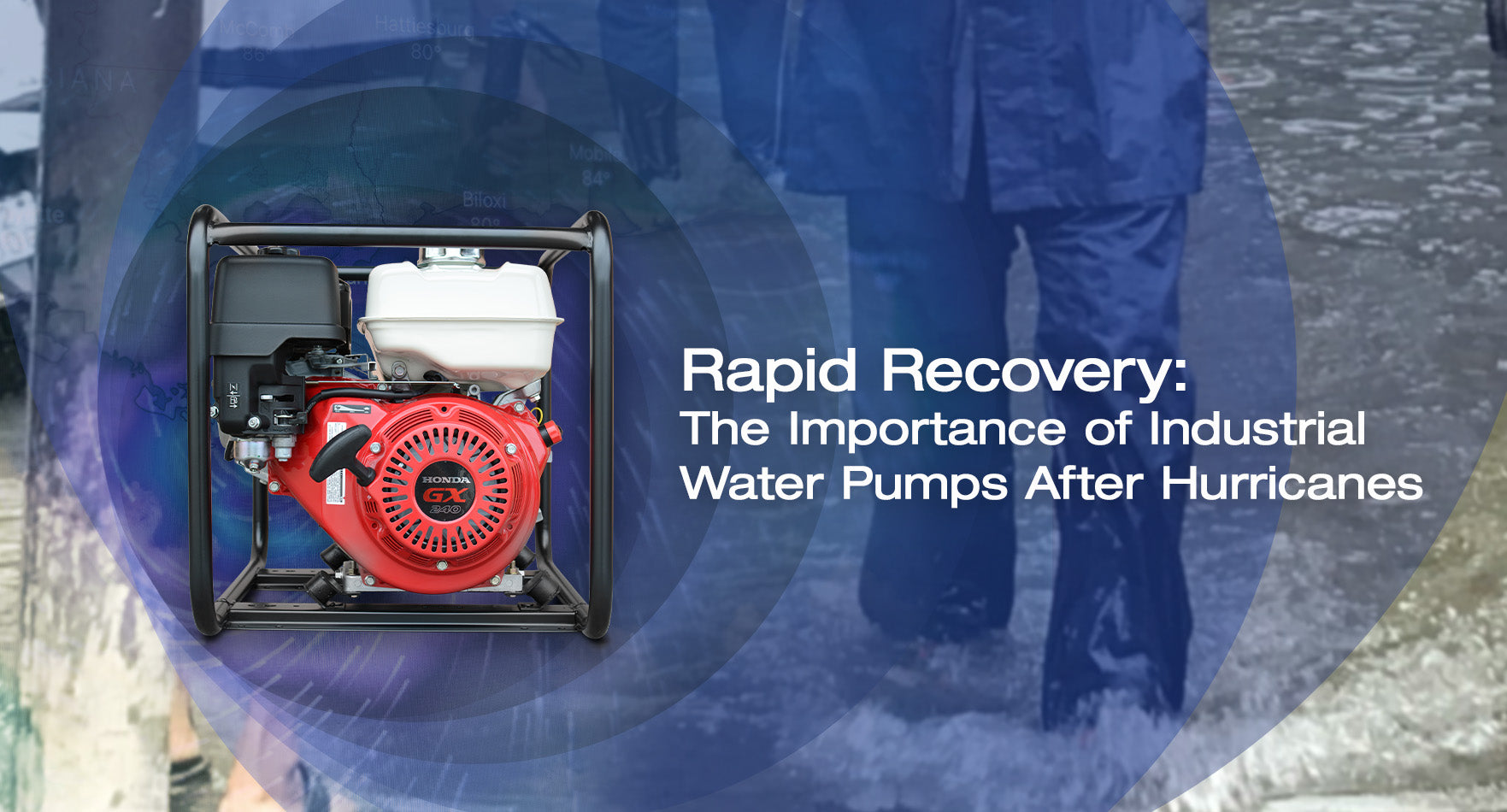Hurricanes are powerful natural events that can wreak havoc on communities, causing extensive flooding and widespread damage. The aftermath of such disasters requires swift and efficient recovery efforts to restore normalcy and prevent further issues. One of the key tools in these recovery efforts is the industrial water pump. These pumps play a crucial role in managing the massive amounts of water that hurricanes can leave behind. In this blog, we will delve into the importance of industrial water pumps after hurricanes and how they facilitate rapid recovery.
The Devastation Caused by Hurricanes
Hurricanes bring heavy rainfall, storm surges, and strong winds, leading to severe flooding and damage to infrastructure. This flooding can inundate homes, businesses, and critical facilities, making immediate recovery efforts challenging. The presence of standing water poses health risks, damages property, and disrupts essential services, making water management a top priority in the aftermath of a hurricane.
The Role of Industrial Water Pumps
Industrial water pumps are designed to handle large volumes of water quickly and efficiently, making them indispensable in hurricane recovery efforts. Here’s how they contribute to rapid recovery:
-
Floodwater Removal: The primary function of industrial water pumps in hurricane recovery is to remove floodwater from affected areas. By quickly pumping out water, these pumps help reduce the risk of structural damage and prevent the growth of mold and mildew.
-
Restoration of Essential Services: Flooded areas often experience disruptions to water supply and sewage systems. Industrial pumps help restore these essential services by removing floodwater and ensuring that clean water can be supplied to affected communities.
-
Prevention of Secondary Damage: Prolonged flooding can lead to secondary damage, such as soil erosion and weakening of building foundations. By rapidly removing water, industrial pumps help prevent these additional issues, making the recovery process smoother and more efficient.
-
Support for Emergency Services: In the immediate aftermath of a hurricane, emergency services rely on industrial pumps to access flooded areas, perform rescues, and provide aid to those in need. Pumps ensure that roads and pathways are cleared of water, facilitating the movement of emergency responders.
Types of Industrial Water Pumps Used After Hurricanes
Different types of industrial water pumps are employed based on the specific needs and conditions post-hurricane:
-
Centrifugal Pumps: These pumps are effective for moving large volumes of water quickly and are commonly used for general floodwater removal.
-
Submersible Pumps: Designed to operate underwater, these pumps are ideal for dewatering basements, underground structures, and other submerged areas.
-
Trash Pumps: Capable of handling water with debris, mud, and other solids, trash pumps are essential in post-hurricane scenarios where floodwaters are contaminated with various materials.
-
High-Pressure Pumps: When water needs to be moved over long distances or uphill, high-pressure pumps provide the necessary force to ensure efficient water transfer.
Real-World Examples of Industrial Water Pumps in Action
Example 1: Hurricane Sandy, 2012
In 2012, Hurricane Sandy caused extensive flooding along the East Coast of the United States. In New York City, industrial water pumps were deployed to remove water from subway tunnels and restore public transportation. The swift action helped minimize disruption and allowed the city to begin recovery efforts promptly.
Example 2: Hurricane Maria, 2017
Hurricane Maria devastated Puerto Rico in 2017, causing widespread flooding and damage to infrastructure. Industrial pumps played a critical role in dewatering flooded areas, enabling the restoration of water supply and sewage systems. This rapid response was crucial in preventing further health crises and accelerating the island's recovery.
Innovations in Pump Technology
Advancements in pump technology have enhanced the efficiency and effectiveness of industrial water pumps in disaster recovery:
-
Portable and Mobile Units: Modern pumps are designed to be easily transported and quickly deployed to disaster sites, providing immediate response capabilities.
-
Remote Monitoring and Automation: Advanced pump systems with sensors and remote monitoring allow for real-time management and optimization of water removal operations.
-
Enhanced Durability and Efficiency: Newer pumps are built to withstand harsh conditions and prolonged use, ensuring they remain operational throughout the recovery process.
Industrial water pumps are vital tools in the rapid recovery process following hurricanes. Their ability to quickly and efficiently remove floodwater, restore essential services, and prevent secondary damage makes them indispensable in disaster response efforts. As hurricanes continue to pose significant challenges, investing in advanced pump technology and infrastructure will be crucial in enhancing our preparedness and resilience. By leveraging the power of industrial water pumps, we can ensure a faster and more effective recovery, helping communities rebuild and thrive after the storm.










